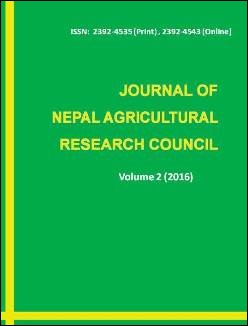Is Investment in Maize Research Balanced and Justified? An Empirical Study
DOI:
https://doi.org/10.3126/jnarc.v2i0.16118Keywords:
Eco-zones, Full Time Equivalent, Geographical regions, Investment, MaizeAbstract
The objective of this study was to investigate whether the investment in maize research was adequate and balanced in Nepalese context. Resource use in maize research was empirically studied with standard congruency analysis by using Full Time Equivalent (FTE) of researchers as a proxy measure of investment. The number of researchers involved in maize was 61 but it was only 21.25 on FTE basis, indicating that full time researchers were very few as compared to the cultivated area of maize in the country. Statistical analysis revealed that the investment in maize research was higher in Tarai and lower in the Hills. Congruency index on actual production basis was found low across the eco-zones and even lower across the geographical regions indicating that the investment in maize research was a mismatch and not justified. While adjusted with the equity factor and the research progress factor in the analysis substantial difference was not found in congruency index. This study recommends that substantial increase in investment in maize research is needed with balanced and justified manner across the eco-zones and the geographical regions. Hills need special attention to increase the investment as maize output value is higher in this eco-zone. Eastern and western regions also need increased investment in maize according to their contribution in the output value.
Downloads
737
679




